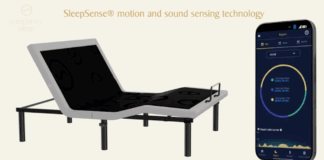BekaertDeslee’s U.S. designers create eye-catching fabrics that address value and sustainability.
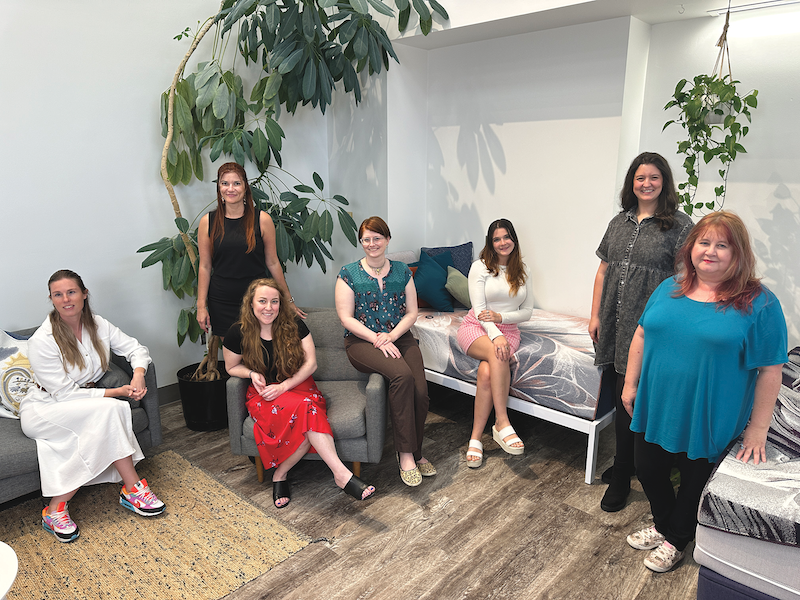
The BekaertDeslee U.S. showroom looks the way you imagine it would — but only better. Racks of fabric samples span the room and eye-catching mattresses dressed in their finest tickings invite visitors to look and touch.
The walls are white, which makes the fabric colors in the room pop. While the racks hold a healthy dose of white and gray fabrics, bolder aquas, purples and charcoals make their presence felt. High windows let in light, and potted plants, including a large tree affectionately named Pam, dot the space with soothing greens.
The showroom is both functional and creative — appropriate for a field that combines artistry with technical know-how.
“Design is such a small word for what it covers,” says Kara Pruitt, lead designer for the company, based in Winston-Salem, North Carolina. “You’re expected to not only know trends, how to work with color, textures and dimension, you also have to make it manufacturable and scalable. It can’t just look pretty. It has to be able to run very, very easily. We’re responsible for every single stitch.”
For example, in circular knitting, every needle is independently controlled, and there can be thousands of needles on a machine.
“If you think of it like a piece of graph paper, each square’s a stitch and we have to tell the machine what to do with each one of those,” she says. “I think it’s over 2 million to 3 million stitches.”
Pruitt has been designing for BekaertDeslee for nine years. It was her first job after getting a degree in fashion and textile design at North Carolina State University. She’s one of seven designers on the United States team. They also partner with BekaertDeslee designers in Canada and Mexico to make up the whole North American team.
Charlene Vaz, director of marketing and design for BekaertDeslee North America, started work the same week as Pruitt, although she was living in Brazil then. Now based in the U.S. office, Vaz likes to point out the strength of the company’s North American designers.
“We are multiple nationalities with different backgrounds,” she says. “We are very highly skilled and aesthetically driven. The customer really will get innovative ideas, fresh ideas. We love collaborating with each other.”
Finding focus
With everything designers have to keep in mind for a project, where do they begin?
For Pruitt, matching the value of the mattress is of key importance.
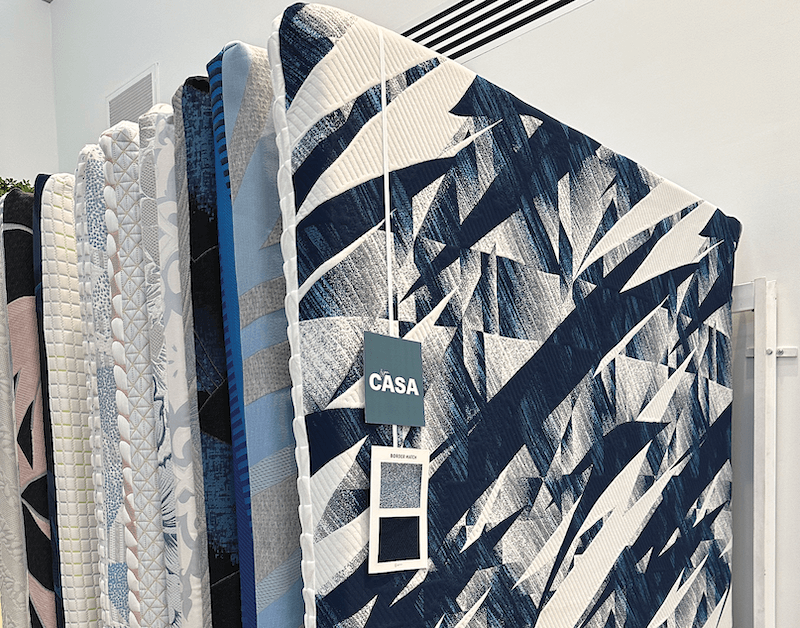
embodies the trend toward bolder and more unexpected fabrics.
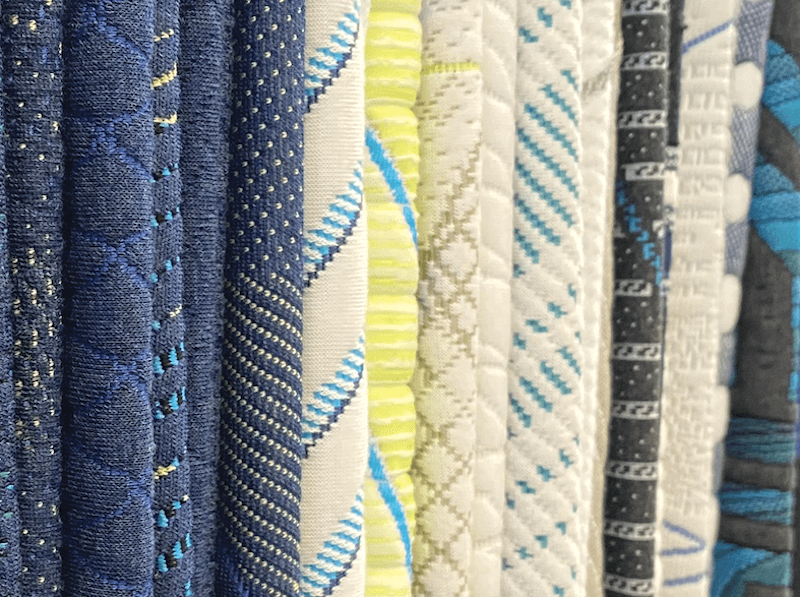
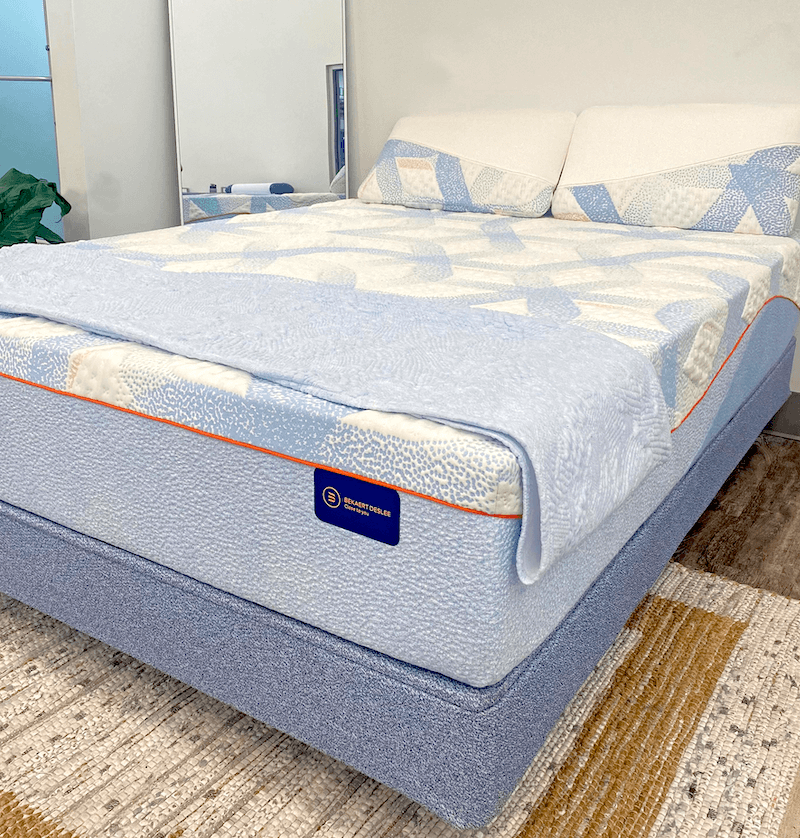
“Honestly, it’s the first question we ask — not only what price point are you wanting for your fabric, but where’s this bed sitting because it has to make sense,” she says. The ticking signals to the consumer what kind of mattress they’re seeing. “In some way, it is like package design. We’re trying to allude to what this bed is going to do for you, whether it’s cooling or it’s a value mattress. And that’s what people are searching for sometimes. They just want a good mattress, nothing flashy, and the fabric has to match that.”
The designers work with the new product introduction team to understand the types of yarn and what type of fabric construction they should use. If it’s a higher demand product, they can bring in custom colors, among other considerations. “Knowing the range of where we need to be is the start of everything.”
BekaertDeslee’s workflow is divided into work with clients and open line or group collections, such as the Casa line shown at ISPA EXPO in March.
Each client brings different expectations. For example, Kingsdown is one of the more fashion forward companies, Pruitt said. “They want the designer that’s working on their fabrics to use their designer eye and come up with a stunning look. They’re willing to go bolder.”
Mike James, Kingsdown chair, visits at least once or twice a year. Kingsdown will send inspiration images, many times from fashion, such as shirts, dresses and scarves.
James will ask them to go ahead and start playing with ideas for colors. “They’ll come here once we have some samples, and it is almost a free-for-all from there,” Pruitt says. She will ask them what they like, what they don’t. Sometimes they’ll like a pattern but want different colors.
BekaertDeslee has other clients that are more commodity driven. “They have one single bed, they need a fabric that is well priced, runs well, and they can just use it for years and years,” she says. “So, that’s where the dynamics can change based on customer.”
Now trending
Outside of client-based work, the design team creates ticking that can be used in the market right away. To find inspiration for those pieces, they concentrate on trend research — color, pattern and consumer desires as they purchase for their home. They use WGSN’s online reports and consult with them throughout the year to help BekaertDeslee sort through all of the information.
What’s trending right now? Anything bold or a bit unexpected, Pruitt says. They want someone to look at a product and think, “Oh, that’s different.”
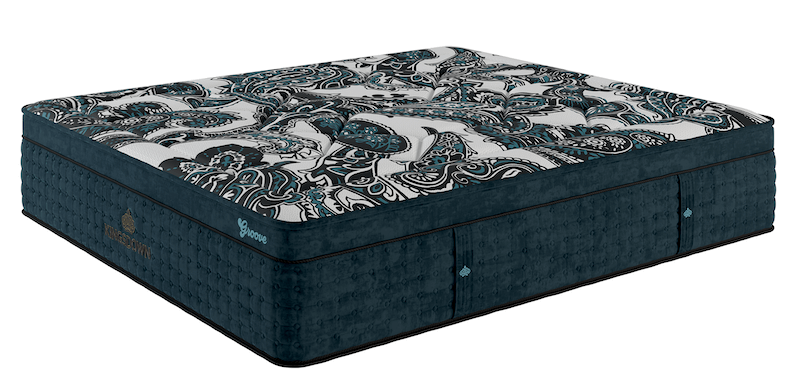
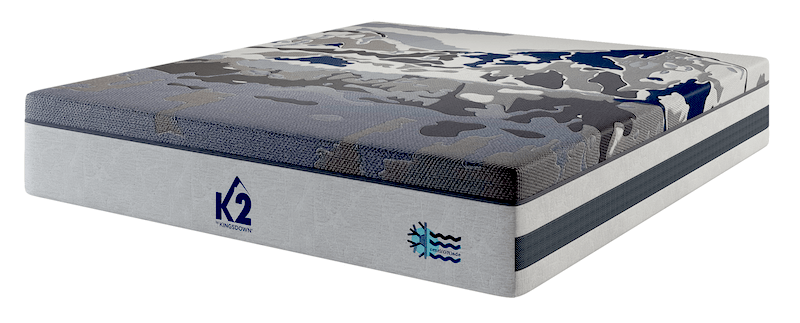
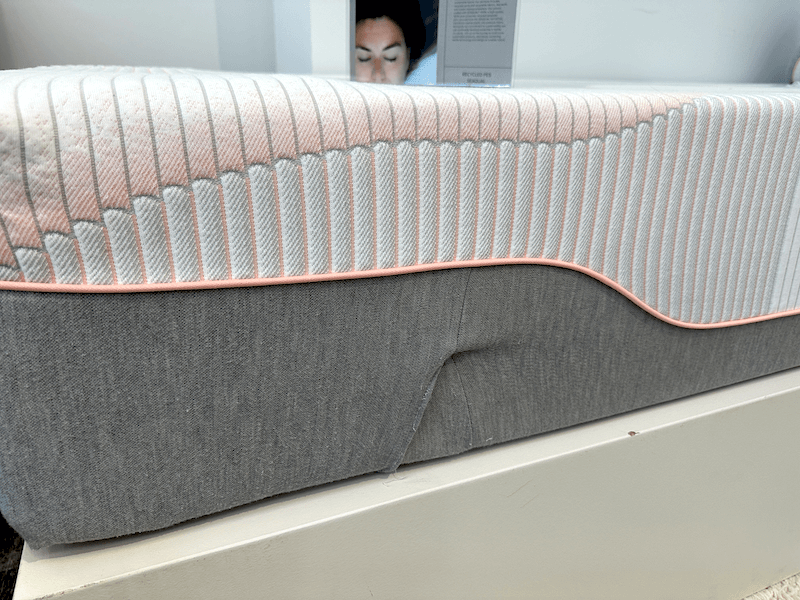
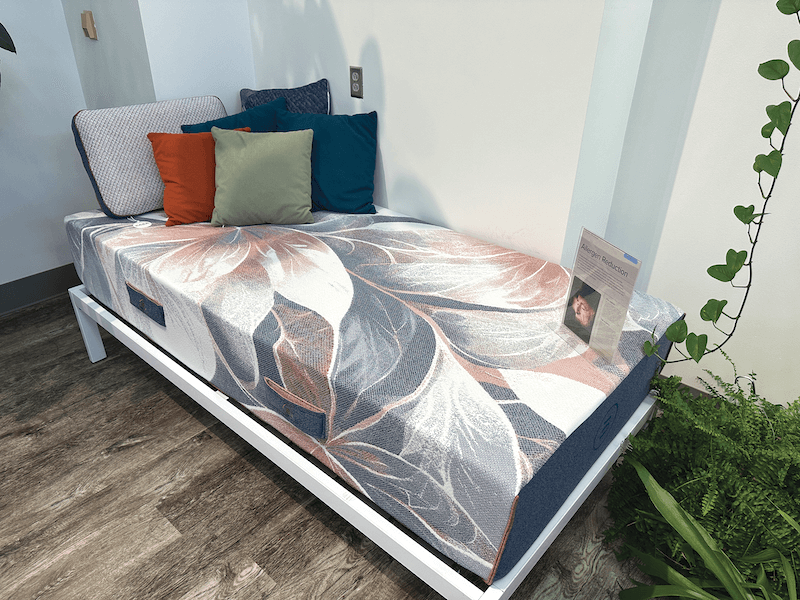
Vaz attributes that to a desire for energy and motivation after the Covid-19 quarantines, especially among Gen Z shoppers. “They are our future consumer for the home, and we need to get prepared for that,” Vaz says. “That’s why you see lots of the bold fabrics that we have in here.”
Designers have begun using a new technology to energize fabric design — artificial intelligence.
“We’ve been playing around with it for I’d say, two or three years now,” Pruitt says. “But probably within the last year, the software has caught up with the interest.”
Previously, designers might have turned to Adobe Stock or Shutterstock to garner inspiration. However, everyone has access to the same images. Now they can use an AI generator. They might start with a piece of artwork and tell AI to make it larger, with more color movement.
“You’re going to be generating artwork that’s going to be very hard for someone else to come up with,” Pruitt says. “As a designer, it’s a little bit of help when you feel stuck. And you see something new, and it just gets your ideas flowing. It creates an artwork that probably is not out there for someone else. It’s unique.”
Vaz notes it’s not used in the way people think, that it spits out the design – tah-dah.
Pruitt agrees. “It’s a beginning. It’s a tool.”
On one of Mike James’ visits, he typed in something like “most beautiful bed” into the AI generator. What it created was a stunning teal and orange paisley bed.
“It was amazing,” Pruitt says. “It inspired a lot of fabrics that were shown at Vegas. When the (market) inspection department makes comments like, ‘Who’s that for?’ that’s when you know you’ve made a good one.”
Dependable and sustainable
But having a beautiful product is just one piece of what makes a fabric supplier successful.
“We can create great, amazing fabric all day long, but if no one’s getting it when they need it, it’s not really going to do the customer any good,” Pruitt says.
BekaertDeslee has consciously worked to decrease its turnaround time on product samples.
“When you do a new design, you’re really creating a custom product every time,” she says. “We try — and we were at, I think three or four weeks for a sample turnaround at one point — we’ve tried to push that down to two weeks or below. And then that goes back also to the manufacturability of the design. Can that sample be reproduced? Over hundreds and hundreds of yards?”
The designers also work with clients by creating digital renderings.
“What’s really nice about that is you can look at a complete range of ideas without having to go through samples that, unfortunately, always end up in the trash,” she says. “We have a 3D simulation software that actually adds the shading and the stitch work to make it look like the fabric would. That way, we can send a complete range of ideas, and then the customer can pick and choose which to actually sample.”
Such practices are good for sustainability, something BekaertDeslee includes as part of its mission. As a global company with headquarters in Waregem, Belgium, the supplier is familiar with the more advanced sustainability initiatives in Europe, which it uses to its advantage in North America.
“We get to piggyback off of that,” Pruitt says. “They’re working a lot with recycled polyester. We offer a wide range of those, but also more circular fabrics with biodegradable yarns. It’s taking it a step further.”
Pruitt points to a bed in the corner as an example of ways they’re creating with sustainability in mind. It features a zipperless cover made from a mono material, meaning it’s 100% polyester. Some of the difficulty in recycling fabric comes when multiple fibers are used.
“If it’s a Tencel and a polyester you can’t recycle it, unless you deconstruct all of those, which that’s a whole process in itself,” she says.
The zipperless cover works a bit like an envelope or a folded sandwich bag. At the end of the mattress’ useful life, the cover can be unfolded and then recycled.
The designers find the desire for sustainable products is growing. Knowing how relevant sustainability is in 2024, they try to help their clients prepare for the future.
“If we’re working on a project for 2027, just imagine the conversation that is going to be happening then,” Pruitt says. “So, we really try and work sustainability in.”
And even if the client doesn’t request a recycled yarn specifically, they are able to show them what it would look like with that type of polyester.
“It is a little bit of an upcharge, but it is not huge,” Pruitt says. “But it is enough that we have to understand if it’s within their wheelhouse or not.”
Pricing is something they keep in mind for their clients — especially in a challenging season.
“We work with our global supply sourcing team so we can get aggressive pricing on yarns,” she says. “We can take those prices and work with our NPI team to determine the right construction to use so we can create a fabric that’s right for that customers’ needs, whether it’s high design or something they can run for years to come.”
Watch the companion video at Mattress Retail Insights: AI-Driven Design, Sustainability, and Value from BekaertDeslee | Beds By Design.







